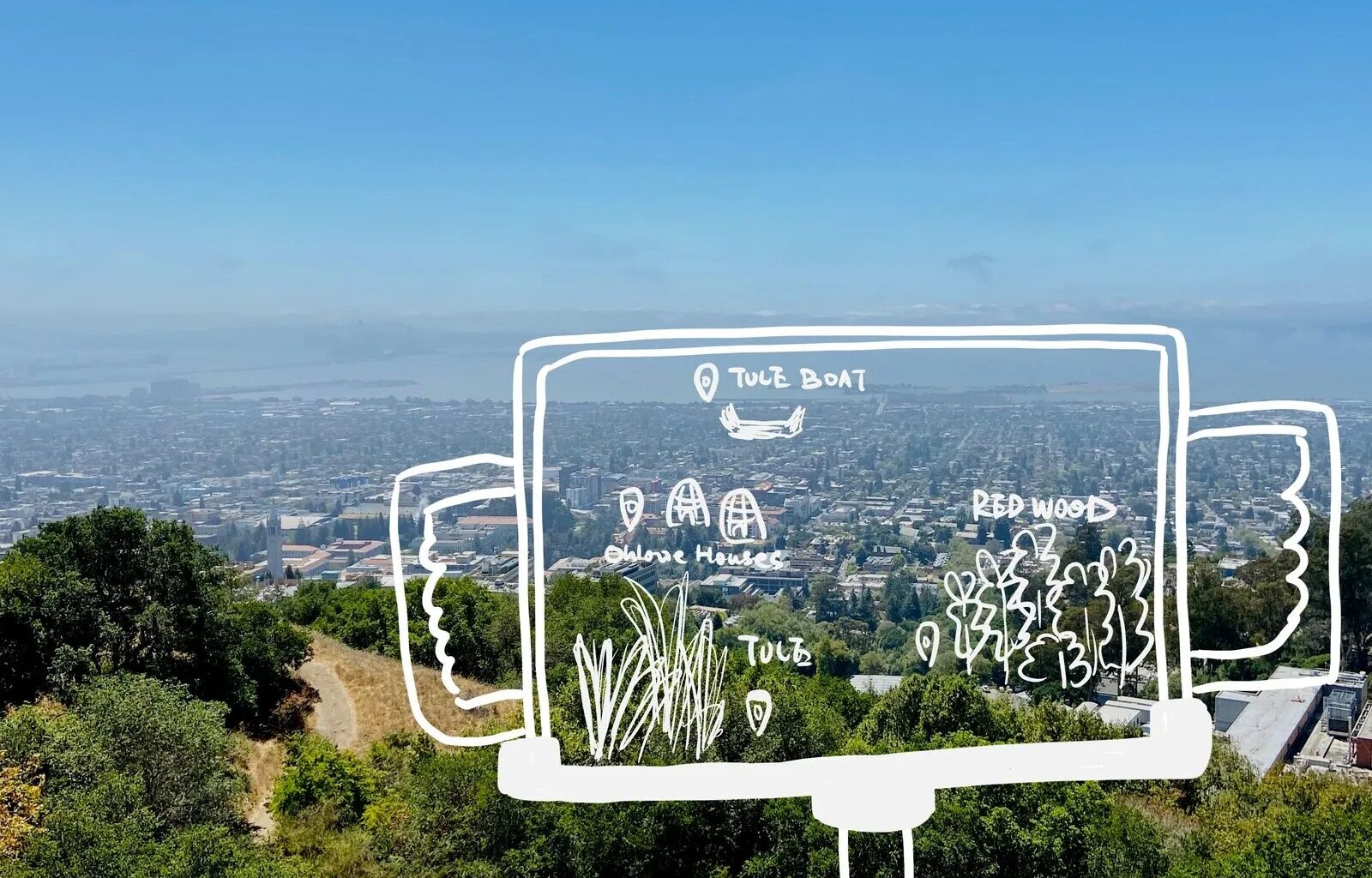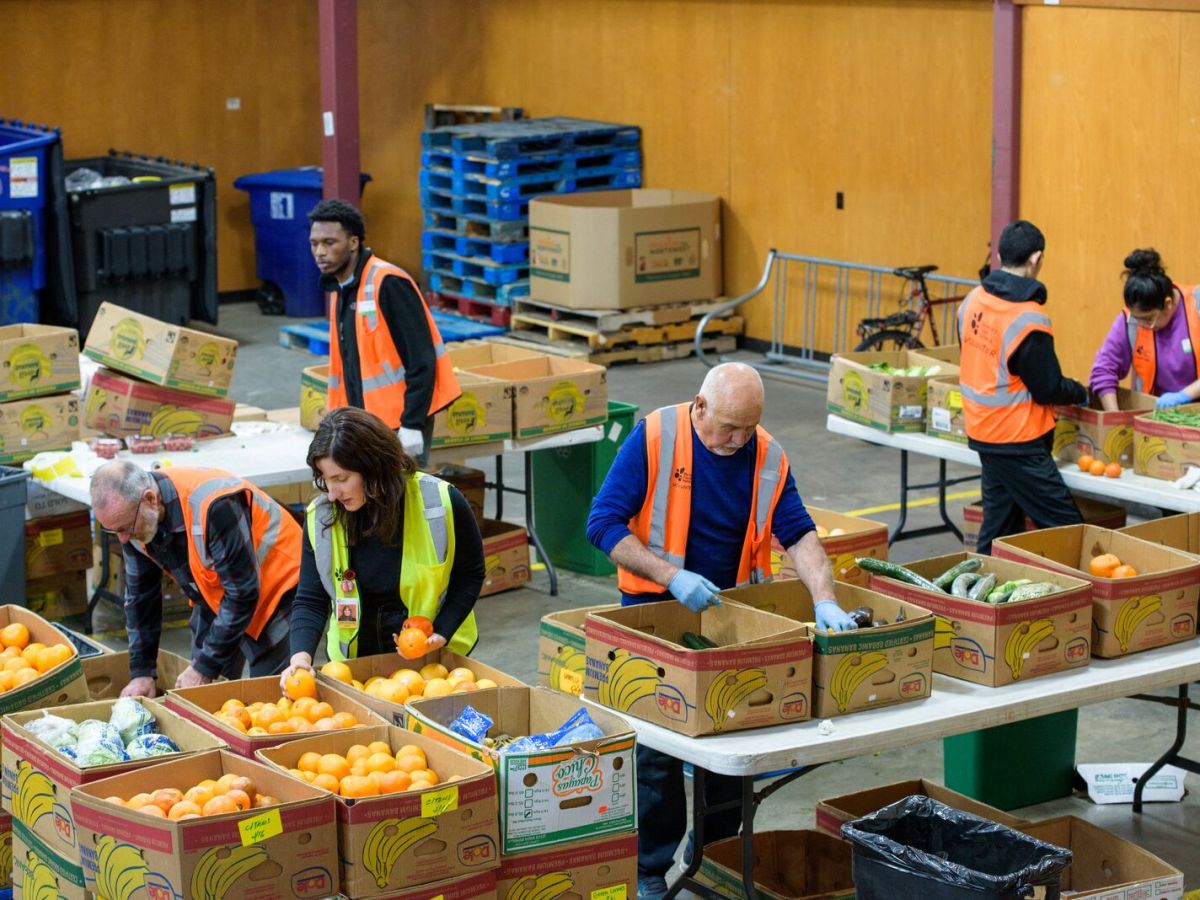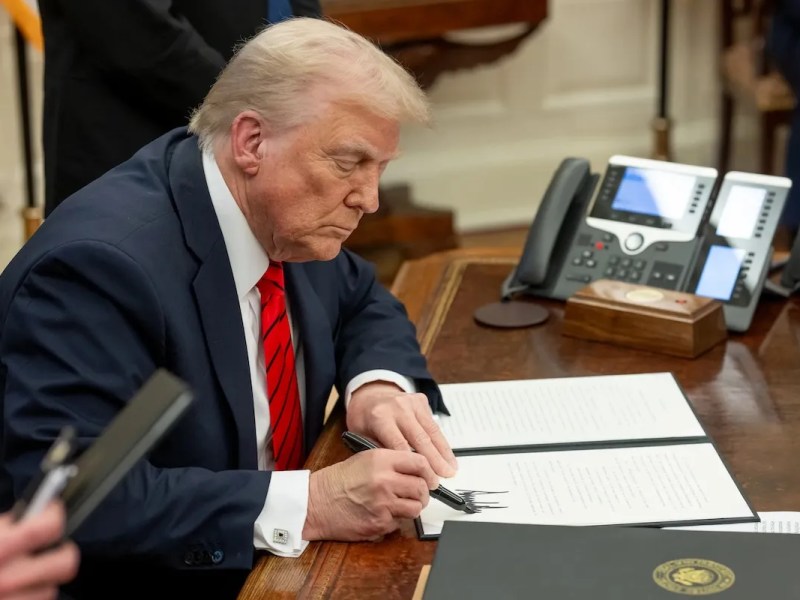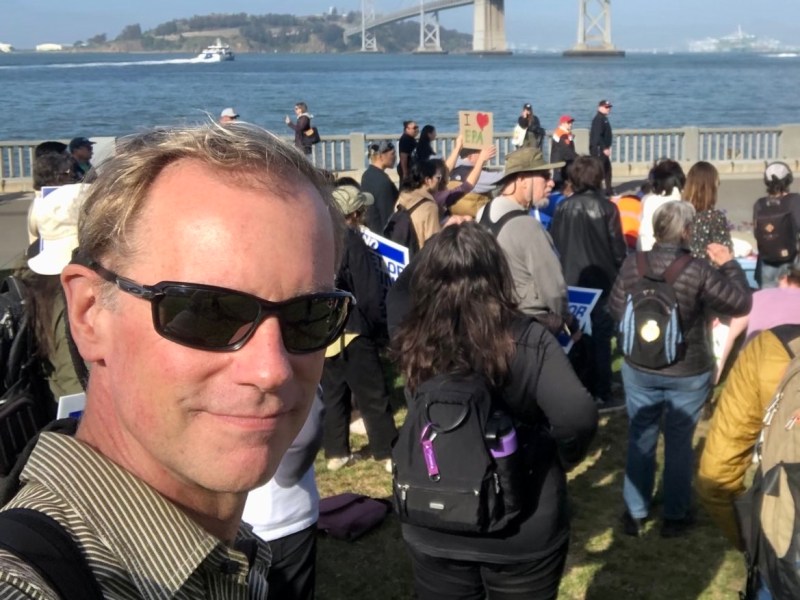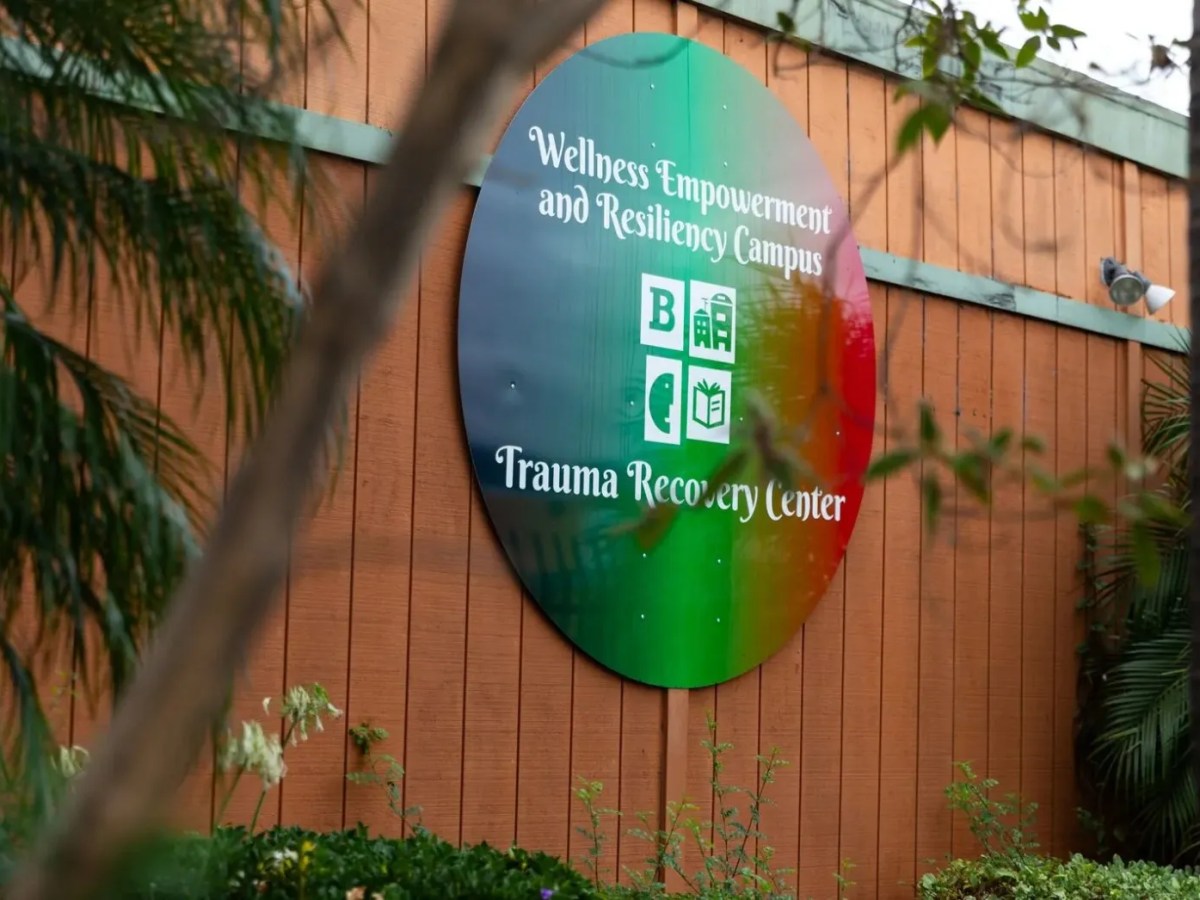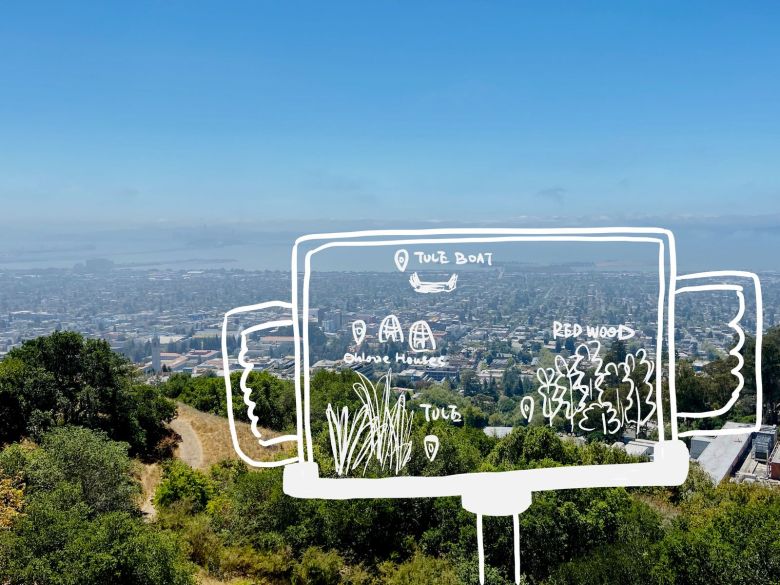 The idea to overlay the western view from the Lawrence Hall of Science with what the land looked like pre-colonization was conceived in 2023 after a walk with Lawrence staff and Vincent Medina and Louis Trevino, members of the Ohlone tribe and co-founders of Cafe Ohlone. Courtesy: Lawrence Hall of Science
The idea to overlay the western view from the Lawrence Hall of Science with what the land looked like pre-colonization was conceived in 2023 after a walk with Lawrence staff and Vincent Medina and Louis Trevino, members of the Ohlone tribe and co-founders of Cafe Ohlone. Courtesy: Lawrence Hall of Science
In 2023, a groundbreaking research project at the Lawrence Hall of Science — what would be the first Ohlone interactive science exhibition ever — received the first installment of a $1.4 million grant promised by the National Science Foundation. The project was scheduled for completion in 2026.
federal funding cuts
It’s not just The Lawrence. Berkeley Food Network is getting less food. Berkeley Rep lost a $40,000 NEA grant to incubate new plays. And a pair of immigrant defense and environmental justice groups, their futures in jeopardy, are taking the administration to court.
Tell Berkeleyside
Know of another group affected? Berkeleyside wants to hear from you.
Send us an email at editors@berkeleyside.org or scroll down and fill out our form.
Called tappenekšekma, the project brings together Ohlone youth as youth as age 6, along with elders in their 90s and Vincent Medina and Louis Trevino, co-founders of Cafe Ohlone and Ohlone activists who are on a six-member team of “science diplomats” that includes researchers from the Lawrence and UC Berkeley. Tappenekšekma is a Chochenyo word that means both “teacher” and “learner.”
The exhibitions created by the collaboration will illustrate Ohlone expertise on topics ranging from the engineering of a tule boat to the leaching of dangerous tannins in acorn processing, with mixed-reality exhibitions that merge aspects of the physical world with “computer vision and digital projections,” said Ari Krakowski, a Lawrence learning designer who is the project’s lead principal investigator.
On April 30, as three completed exhibit concepts moved toward prototyping, the researchers learned that their work was among nine federally funded projects at the Lawrence Hall of Science whose grants were terminated by President Donald Trump’s unofficial Department of Government Efficiency, totaling more than $6 million. The projects are in various stages of completion. So far, more than half the Ohlone grant money has been spent.
“Our staff is reeling,” said Susan Gregory, the Lawrence’s deputy director, who’s worked at the museum for 50 years. “It’s extremely traumatic for all of us.”
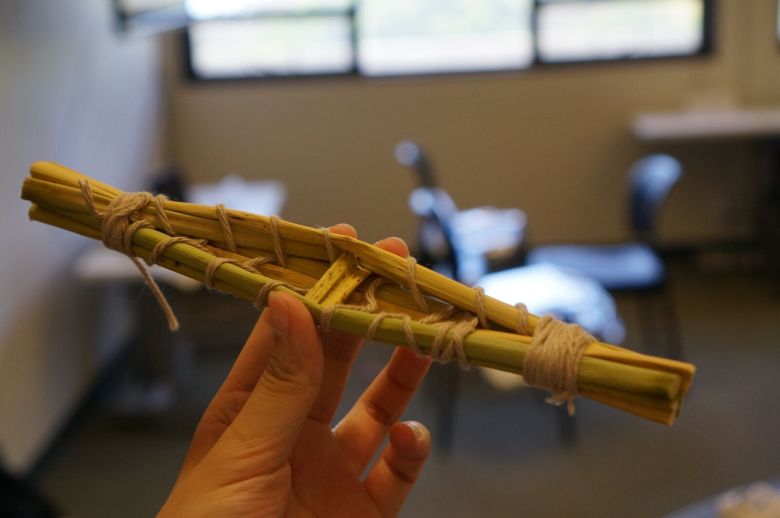 Making a mini tule boat is part of the programming at the Lawrence that recognizes Ohlone science. Courtesy: Lawrence Hall of Science
Making a mini tule boat is part of the programming at the Lawrence that recognizes Ohlone science. Courtesy: Lawrence Hall of Science
The Lawrence’s grant terminations join a litany of other federal funding cuts that have impacted nonprofit and educational institutions all over Berkeley, from legacy arts organizations like Berkeley Rep to Luna Dance & Creativity, where grants for dance education from the National Endowment for the Humanities and National Endowment for the Arts make up 10% of its budget, to the 52-year-old Building Opportunities for Self-Sufficiency (BOSS), whose cancelled U.S. Justice Department grant had been earmarked for mental health services and clinicians at the nonprofit’s new trauma recovery center in East Oakland.
Purges at the National Institutes of Health and the dismantling of the Institute of Museum and Library Services (IMLS) have also jeopardized millions of dollars for scientific research at UC Berkeley and its programming at Berkeley Art Museum and Pacific Film Archive.
At the Lawrence, six grants and one “subaward,” which involves collaboration with another organization, were from the National Science Foundation. Two cancelled grants were from the Institute of Museum and Library Services, which funds museums and libraries.
Amid the Trump administration’s “war on woke,” targeting organizations that address diversity, equity and inclusion and the environment, both federal agencies have faced tremendous budget cuts. In March, after a brief meeting with DOGE, the IMLS placed its entire staff on administrative leave. The NSF, meanwhile, has axed at least 387 awards worth $237 million, of which roughly 45% has already been spent, according to an internal list obtained by Nature.
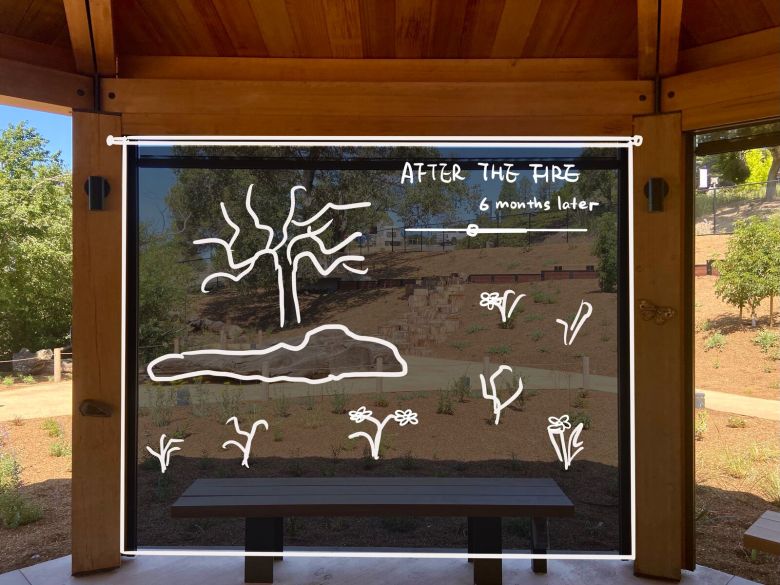 An exhibit idea about the effects of fire that’s part of the Ohlone project, which has lost part of its National Science Foundation grant. Courtesy: Lawrence Hall of Science
An exhibit idea about the effects of fire that’s part of the Ohlone project, which has lost part of its National Science Foundation grant. Courtesy: Lawrence Hall of Science
Several of the other grant-funded programs at the Lawrence include:
Caminos de la Ciencia: A program of the IMLS, the program was described on the Oakland Public Library’s Instagram page as engaging UC Berkeley scientists with the Spanish-speaking community, “to share the excitement & relevance of scientific research.” Lectures are presented in Spanish and include hands-on activities. A three-speaker event in partnership with Science at Cal was held at Oakland’s César E. Chávez Branch in September 2024.
A $2 million, three-year project to create and sustain more equitable, inclusive, culturally relevant STEM workplaces and learning environments.
A four-year, $2 million continuing grant that began in 2021 to explore the impact of an informal science education programming model on “youth of color” in urban areas. The project’s estimated completion date was on Aug. 31, 2025, but the grant was terminated on April 18.
A project designed to understand the impact of outdoor science and environmental learning on communities of color that would culminate in a national study. So far, more than half of the $2.1 million grant has been awarded.Scrambling for funding
While most people know the Lawrence as UC Berkeley’s kids-oriented science center, that’s “just tip of the iceberg of what we do,” Gregory said.
Founded in 1968 by the Regents of the University of California as a memorial to E.O. Lawrence, the legendary UC Berkeley physicist and first Nobel laureate who invented the cyclotron, the Lawrence has a mandate to provide science education to the public and professional science development for teachers, along with research projects to further the teaching of science around the world.
“We’re an organized research unit in terms of how the regents envisions us,” Gregory said.
While Gregory couldn’t estimate how many researchers were affected, most projects involve at least three to four. So far, she said none of the researchers, called principal investigators, have lost their jobs, but she has no idea what that will mean in the future. “It’s way too early to tell,” she said.
Long-term, however, the effects of the funding loss will impact a much larger community.
“Unless replacement funds are found, these terminations will impact several programs that serve schools, families, community-based organizations, and educators both in Northern California and nationwide,” Gregory said in a statement, “and will have long-term impacts on critical research and dissemination activities designed to advance Science Technology Engineering and Mathematics (STEM) education.”
Once the cuts were announced on April 30, Lawrence researchers have been scrambling to find alternative funding, Gregory said.
“Everybody’s working really hard to make it work,” Gregory said. “They’re all running around and talking to donors who have been supportive in the past. There’s a huge amount of effort going on.”
She said the university is looking at ways to bridge funding, but such plans are still in a formative phase. “I don’t know any of the details yet,” she said.
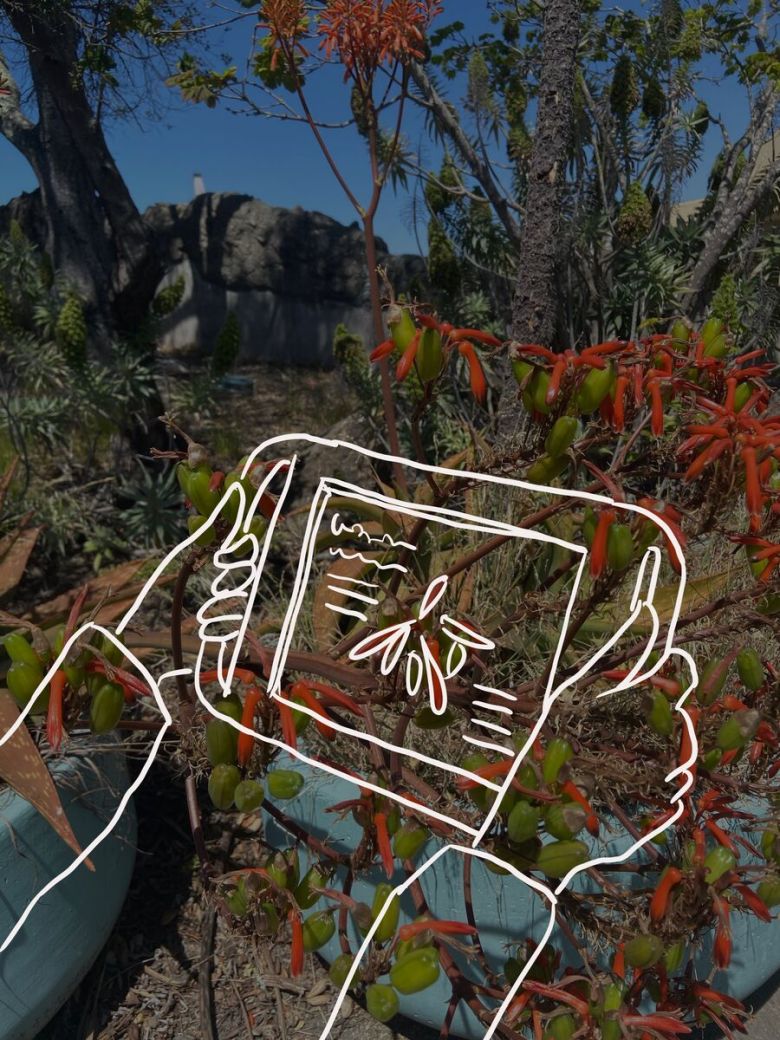 Many of the exhibits that are part of the Ohlone science project at the Lawrence Hall of Science will include mixed reality devices. Courtesy: Lawrence Hall of Science
Many of the exhibits that are part of the Ohlone science project at the Lawrence Hall of Science will include mixed reality devices. Courtesy: Lawrence Hall of Science
The Ohlone team, meanwhile, is in active fundraising mode, looking for donations from foundations or individual donors.
Even without funding, Krakowski said the team plans to move ahead with the next phase on May 10, when Native visitors will test the exhibit prototypes.
“Ohlone knowledge and ways of knowing and understanding and connecting to the land is critical as we try to figure out how to live on this planet and here in the Bay Area,” said Jedda Foreman, a Lawrence learning designer specialist who’s a co-principal investigator on the project.
“Ironically,” said Krakowski, May 10 is STEM Day at the Lawrence, “celebrating NSF’s 75th birthday and 75 years of NSF-funded innovative science education at the Lawrence and UC Berkeley.”
Related stories
May 2, 2025May 3, 2025, 7:20 a.m.
April 30, 2025May 5, 2025, 7:31 a.m.
April 30, 2025April 30, 2025, 2:00 p.m.
“*” indicates required fields
